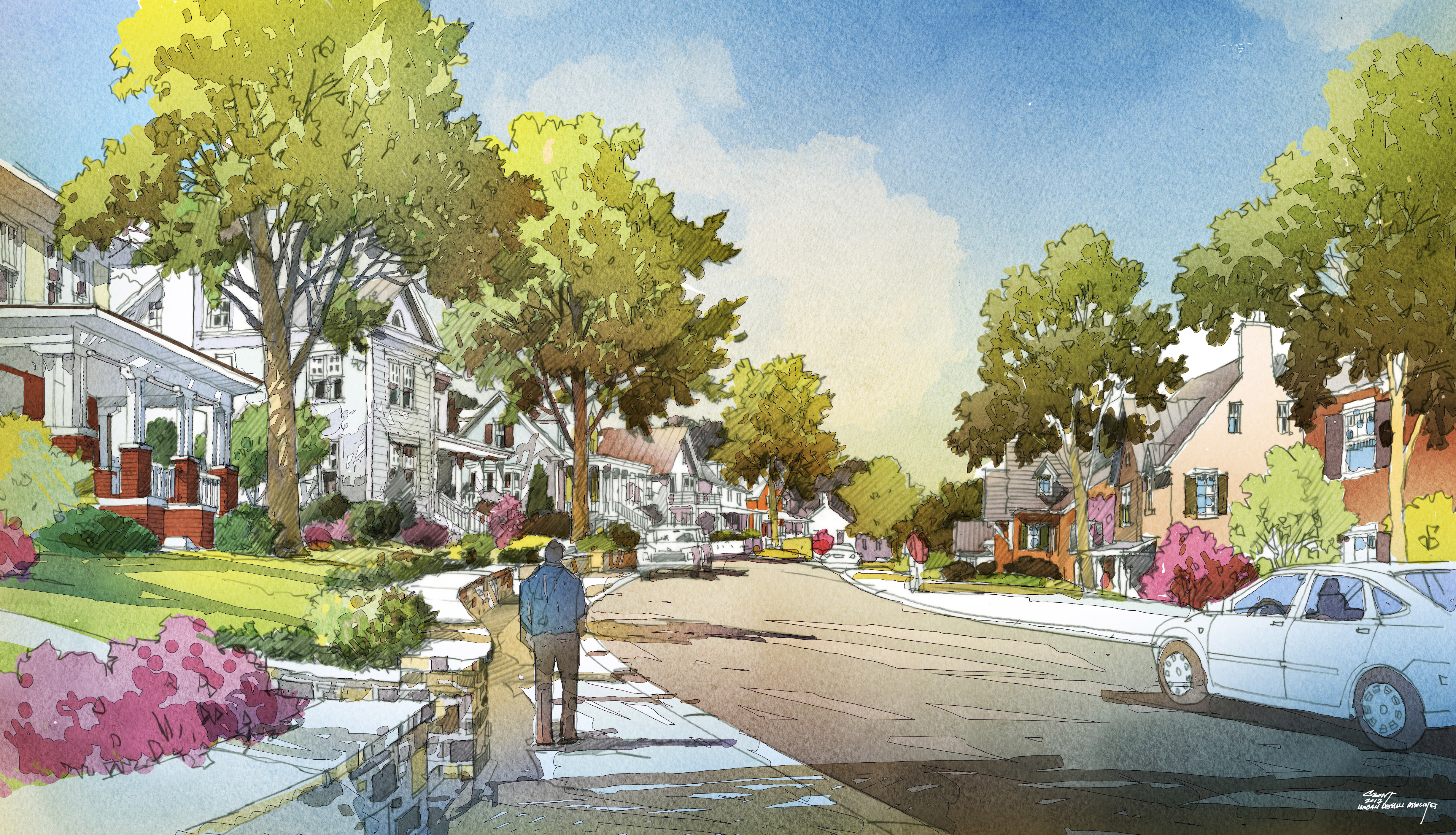MY CHATT HOUSE
The website, www.mychatthouse.com, provides guidance to homeowners in neighborhoods near downtown interested in fixing up their existing home, building a new one, or landscaping their yard.
From North Chattanooga to Highland Park, cries about development that's out of character with the historic fabric of neighborhoods are frequent complaints.
The Chattanooga Design Studio has crafted an online resource called My Chatt House that officials believe will make it easier for homeowners, developers and others to recognize historic patterns in many of the city's neighborhoods.
"It's trying to [provide incentives] for traditional neighborhood development," said Eric Myers, the studio's executive director, who thinks the newly launched resource at www.mychatthouse.com is the first such online version in the country.
Known in the industry as "pattern books," he said such guides historically are printed.
With a $160,000 Lyndhurst Foundation grant, the studio hired a consulting firm, Urban Design Associates of Pittsburgh, to help provide the content, Myers said. Also, another company, ND&P Agency, was brought into work on the website.
Taking about a year to complete, the effort on the guide started with two basic types of neighborhoods - valley and hillside, the studio's director said.
"Each has different characteristics because of typography," he said, noting the streets look differently in North Chattanooga than in East Chattanooga, for example.
The resource examines the predominant house styles in each of the neighborhoods.
"What do you do if you're renovating and adding on?" Myers said. "Neighborhood styles are different."
He said someone may want to put a garage on the front of a house, but it may not fit that home and neighborhood.
"It's out of character," Myers said, adding that the resource guide will show that's the case.
With more infill development occurring in neighborhoods around downtown, he believes the guide will help ease some of accompanying tensions that sometimes flare up.
"It's not good for the neighborhoods," Myers said.
Donna Williams, the city's administrator of the Office of Economic and Community Development, said the resource is "a good starting point for a conversation" between people.
"It adds context to a conversation," she said.
Williams said neighborhoods have some level of architectural continuity that hold them together.
"It's not that all the houses look alike, but there are principles," she said.
The resource will help builders when it comes to finding which architectural features are appropriate in a neighborhood without having to pay a professional, Williams said. Also, the guide shows the best way to site a house on a lot in the neighborhoods, she said, saving time for both the builder and city employees who issue permits.
Amy Donahue, the River City Co.'s director of marketing and communication, said that as downtown has become a more attractive place over the years, neighborhoods around the central city are becoming more desirable.
Such neighborhoods "provide great access to downtown," she said, adding that the residents like the entertainment options in the city's core.
"We feel like this is a tool that can in a lot ways provide a lot guidance," Donahue said about the guide.
She, too, expected that added infill projects will take place in the surrounding neighborhoods, and the resource will help offer guidelines to homebuyers and builders.
So far, Myers said, the studio has had positive feedback about My Chatt House, having met early on with more than two dozen local builders.
"It has an unbelievable amount of content," Myers said. He added that the central city neighborhoods are not included in the guide because they're covered by the relatively new form-based code or are local historic districts. Myers said those types of zoning are in themselves "character preservation tools."
Plans are to keep the guide as an open source and free to anyone, though there could be some money-making opportunities longterm for advertisements, he said. There's even some house plans that people can download for free, Myers said.
Contact Mike Pare at mpare@timesfreepress.com or 423-757-6318. Follow him on Twitter @MikePareTFP.


